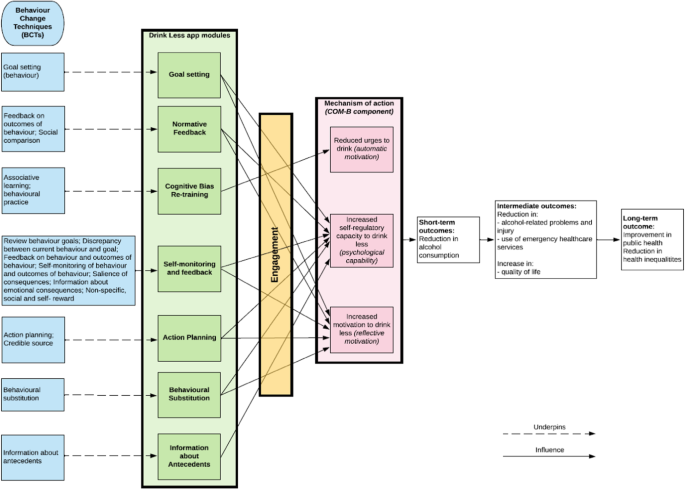Do engagement and behavioural mechanisms underpin the effectiveness of the Drink Less app?
IF 12.4
1区 医学
Q1 HEALTH CARE SCIENCES & SERVICES
引用次数: 0
Abstract
This is a process evaluation of a large UK-based randomised controlled trial (RCT) (n = 5602) evaluating the effectiveness of recommending an alcohol reduction app, Drink Less, compared with usual digital care in reducing alcohol consumption in increasing and higher risk drinkers. The aim was to understand whether participants’ engagement (‘self-reported adherence’) and behavioural characteristics were mechanisms of action underpinning the effectiveness of Drink Less. Self-reported adherence with both digital tools was over 70% (Drink Less: 78.0%, 95% CI = 77.6–78.4; usual digital care: 71.5%, 95% CI = 71.0–71.9). Self-reported adherence to the intervention (average causal mediation effect [ACME] = −0.250, 95% CI = −0.42, −0.11) and self-monitoring behaviour (ACME = −0.235, 95% CI = −0.44, −0.03) both partially mediated the effect of the intervention (versus comparator) on alcohol reduction. Following the recommendation (self-reported adherence) and the tracking (self-monitoring behaviour) feature of the Drink Less app appear to be important mechanisms of action for alcohol reduction among increasing and higher risk drinkers.


参与和行为机制是否支撑了 "少饮 "应用程序的有效性?
这是对英国一项大型随机对照试验(RCT)(n = 5602)进行的过程评估,该试验评估了推荐一款名为 "少喝点 "的减酒应用程序与常规数字护理相比,在减少日益饮酒者和高风险饮酒者的饮酒量方面的效果。目的是了解参与者的参与度("自我报告的依从性")和行为特征是否是支持 "少喝点 "有效性的作用机制。两种数字工具的自报坚持率均超过70%(少喝一点:78.0%,95% CI = 77.6-78.4;常规数字护理:71.5%,95% CI = 71.0-71.9)。自我报告的干预坚持率(平均因果中介效应[ACME] = -0.250,95% CI = -0.42,-0.11)和自我监测行为(ACME = -0.235,95% CI = -0.44,-0.03)均部分中介了干预(相对于比较者)对减少饮酒的影响。少饮应用程序的推荐(自我报告的遵守情况)和跟踪(自我监控行为)功能似乎是对饮酒量增加和饮酒风险较高者进行减酒的重要作用机制。
本文章由计算机程序翻译,如有差异,请以英文原文为准。
求助全文
约1分钟内获得全文
求助全文
来源期刊

NPJ Digital Medicine
Multiple-
CiteScore
25.10
自引率
3.30%
发文量
170
审稿时长
15 weeks
期刊介绍:
npj Digital Medicine is an online open-access journal that focuses on publishing peer-reviewed research in the field of digital medicine. The journal covers various aspects of digital medicine, including the application and implementation of digital and mobile technologies in clinical settings, virtual healthcare, and the use of artificial intelligence and informatics.
The primary goal of the journal is to support innovation and the advancement of healthcare through the integration of new digital and mobile technologies. When determining if a manuscript is suitable for publication, the journal considers four important criteria: novelty, clinical relevance, scientific rigor, and digital innovation.
 求助内容:
求助内容: 应助结果提醒方式:
应助结果提醒方式:


